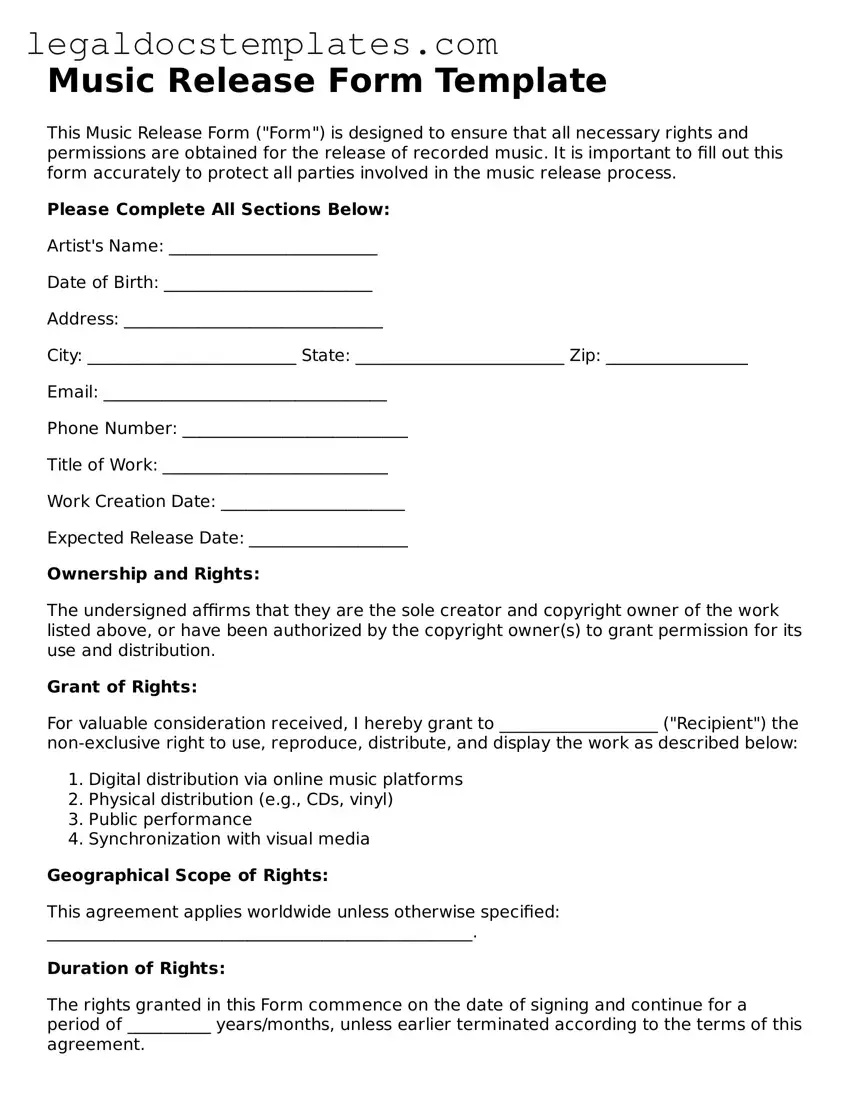Music Release Form Template
This Music Release Form ("Form") is designed to ensure that all necessary rights and permissions are obtained for the release of recorded music. It is important to fill out this form accurately to protect all parties involved in the music release process.
Please Complete All Sections Below:
Artist's Name: _________________________
Date of Birth: _________________________
Address: _______________________________
City: _________________________ State: _________________________ Zip: _________________
Email: __________________________________
Phone Number: ___________________________
Title of Work: ___________________________
Work Creation Date: ______________________
Expected Release Date: ___________________
Ownership and Rights:
The undersigned affirms that they are the sole creator and copyright owner of the work listed above, or have been authorized by the copyright owner(s) to grant permission for its use and distribution.
Grant of Rights:
For valuable consideration received, I hereby grant to ___________________ ("Recipient") the non-exclusive right to use, reproduce, distribute, and display the work as described below:
- Digital distribution via online music platforms
- Physical distribution (e.g., CDs, vinyl)
- Public performance
- Synchronization with visual media
Geographical Scope of Rights:
This agreement applies worldwide unless otherwise specified: ___________________________________________________.
Duration of Rights:
The rights granted in this Form commence on the date of signing and continue for a period of __________ years/months, unless earlier terminated according to the terms of this agreement.
Royalties & Payment:
The Recipient agrees to pay the following royalties to the undersigned: ___________________________________________.
Credit:
The undersigned shall be credited in all distributions of the work as follows: _____________________________________.
Additional Terms: ___________________________________________________________________________________________.
By signing below, all parties agree to the terms of this Music Release Form.
Artist's Signature: ___________________________ Date: _____________
Recipient's Signature: _______________________ Date: _____________
Note: It is advisable to consult with a legal professional to ensure compliance with local state laws and regulations, as some aspects of this agreement may vary by jurisdiction.
